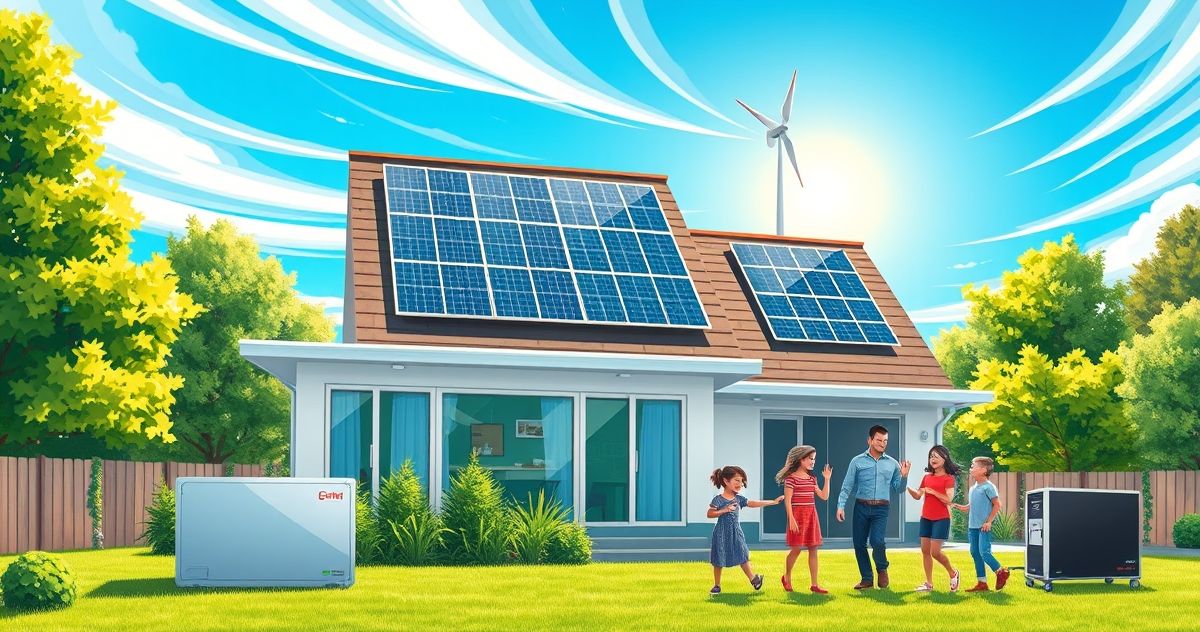Understanding the Distributed Energy Resource Credit
The Distributed Energy Resource Credit (DER Credit) is an essential component of modern energy policy, designed to incentivize the adoption and deployment of distributed energy resources (DERs). These resources include small-scale units of local generation connected to the grid at the distribution level. DERs typically encompass renewable energy technologies, such as solar panels, wind turbines, and energy storage systems. The primary purpose of the DER Credit is to promote environmental sustainability, reduce energy costs, and decentralize power generation, which enhances grid reliability and resilience.
What is the Distributed Energy Resource Credit?
The Distributed Energy Resource Credit is a tax incentive program offered to individuals and businesses that install and operate qualifying renewable energy systems. These credits aim to offset the costs associated with such installations and encourage broader participation in generating renewable energy. By reducing the financial burden on participants, the DER Credit facilitates the transition towards a more sustainable energy infrastructure.
Primary Purpose of the Distributed Energy Resource Credit
The primary purpose of the Distributed Energy Resource Credit is to accelerate the adoption of renewable energy technologies by providing financial incentives. This credit helps mitigate the upfront capital costs involved in setting up energy systems, making them more financially viable for individuals and organizations.
The incentivization of DERs not only contributes to reducing greenhouse gas emissions but also supports energy diversity and security. Decentralized energy generation reduces dependency on large, centralized power plants and minimizes transmission losses by generating power closer to the point of consumption.
Key Features of the Distributed Energy Resource Credit
- Eligibility: The credit typically applies to a wide range of renewable energy technologies, including solar photovoltaic systems, wind turbines, and battery storage systems. Systems must meet certain size and efficiency criteria to qualify.
- Credit Amount: The amount of the credit often varies based on the type of technology, its capacity, and the jurisdiction offering the credit. It may cover a percentage of the installation costs or offer a fixed amount per kilowatt installed.
- Carry Forward Provisions: In some cases, if the credit amount exceeds the taxpayer’s liability in a given year, the excess may be carried forward to offset tax liabilities in future years.
- State and Federal Variations: The availability and specifics of DER Credits can vary significantly between different states and at the federal level, reflecting diverse policy goals and energy market conditions.
Relevant Filing or Compliance Requirements
Claiming the Distributed Energy Resource Credit typically involves specific filing and compliance steps. Taxpayers must provide detailed documentation, including proof of system installation, compliance with technical standards, and evidence of operational status. The following outlines key filing requirements:
- Proper Documentation: Participants must submit receipts, installation contracts, and technical specifications as part of their tax filings to support their claim for the credit.
- Certification and Inspections: Many jurisdictions require that the installations be certified by a licensed professional and pass inspections to ensure compliance with applicable standards and safety codes.
- Tax Form Submission: Applicants must complete and attach the specific forms related to renewable energy credits to their tax returns. These forms collect detailed information about the energy systems and the amount claimed.
Penalties or Consequences for Non-Compliance
Non-compliance with the requirements for claiming the Distributed Energy Resource Credit can lead to several penalties or adverse consequences, including:
- Denial of Credit: Failure to provide adequate documentation or certify the installation may result in the denial of the credit, leading to increased tax liabilities.
- Fines and Interest: Incorrect claims can attract fines and the imposition of interest on unpaid tax amounts. This can be a financial burden for claimants who have invested in renewable energy systems.
- Audits: Inaccurate or fraudulent claims may trigger audits by tax authorities, involving a thorough review of the taxpayer’s financial records and project documentation.
Importance and Significance in Tax Resolution and Financial Compliance
The Distributed Energy Resource Credit is significant for several reasons, notably in tax resolution and promoting broader compliance with clean energy goals:
- Financial Incentive for Renewable Energy: By providing a tangible tax benefit, the DER Credit lowers entry barriers to renewable energy investment, making it more accessible and attractive for individuals and businesses.
- Supports Environmental Goals: Encouraging renewable energy installations aligns with broader environmental objectives and commitments to reducing carbon footprints, transitioning to cleaner energy sources, and fostering sustainability.
- Enhances Local Economies: By promoting local installations, the DER Credit contributes to job creation within the renewable energy sector, boosting local economies and technical expertise.
- Reduces Energy Costs: Distributed generation can help stabilize or reduce energy costs over time by promoting competition and reducing reliance on fossil fuels, leading to more predictable and potentially lower energy bills.
Overall, the Distributed Energy Resource Credit plays a crucial role in accelerating the shift towards renewable energy, contributing to environmental sustainability, and offering economic benefits to participants. By understanding the scope and requirements of these credits, individuals and businesses can effectively leverage them to optimize their tax liabilities while contributing positively to energy transition goals.

